

HUMAN BEINGS have been shaping and modifying the earth since the dawn of humankind. Some Native Americans, for instance, burned grasslands year after year to keep the forests from encroaching and thus created favorable habitat for the game and plants they harvested. Today, humans possess power to rapidly, profoundly, and permanently alter landscapes for agriculture, forestry, mining, and urban development. This habitat alteration can dramatically affect the survival rate of bees and other pollinators.
Pollinators are threatened by the same destructive forces many other animals face. The leading causes of animal endangerment are the loss, degradation, and fragmentation of habitat; displacement by invasive species; and pollution (including pesticide poisoning). Many pollinating species are threatened by additional problems such as overcollecting, light pollution, and climate change.
These threats are all the result of human activity. Although the impacts of such actions can never be completely reversed, only human action can begin the process of restoring pollinators and the balance they bring to the health of an ecosystem.

Appearing green and lush, extensive crop fields support very little biodiversity and reduce habitat as they expand.
Both the outright destruction of habitat and the fragmentation of habitat into small, isolated patches threaten the diversity and abundance of native pollinators. Agriculture and development rank as the most frequent causes of habitat degradation. In urban areas the loss of wild habitat is apparent, but the fragmentation of habitat in rural areas is no less a problem.

“Sterile” field margins provide no habitat.
Agriculture is the single largest component of global land use, with some 36 percent of the world’s land surface devoted to it. According to noted lepidopterist and author Robert Michael Pyle, agriculture has caused the greatest loss of native insect populations. Farming and ranching practices may leave the landscape green, but those fields hold few food or nest resources and are often laden with pesticides. What little habitat is left — field margins, hedgerows, roadside banks, and the sides of ditches and creeks — is very important for pollinators, but is susceptible to drifting insecticides and hosts fewer of the native plant species that bees and other pollinators require.
Standing alongside agriculture as the most frequent cause of habitat loss is commercial and residential development. This often occurs in places that have naturally high biodiversity, such as along rivers or near bays and estuaries. Urban development in the southeastern United States and in California has caused particularly significant losses for native insects because many cities were built in coastal areas that were home to unique species and habitats.
A striking example is San Francisco, which now covers almost entirely what was once one of the major coastal dune ecosystems in western North America. Three dune butterflies once endemic to this region are now extinct: the Xerces blue (Glaucopsyche xerces) and Pheres blue (Icaricia icarioides ssp. pheres), which were well enough known to be given common names, and one other, Cercyonis sthenele ssp. sthenele.
It is not just the dune ecosystems that were depleted by urban spread, but also a specialized coastal hills ecosystem. Three other butterflies, the callippe silverspot (Speyeria callippe ssp. callippe), the San Bruno elfin (Callophrys mossii ssp. bayensis), and the mission blue (Icaricia icarioides ssp. missionensis), are now reduced to only a handful of colonies each on the San Francisco peninsula. San Bruno Mountain, the last remnant of the San Francisco hills ecosystem, is vital to their survival.
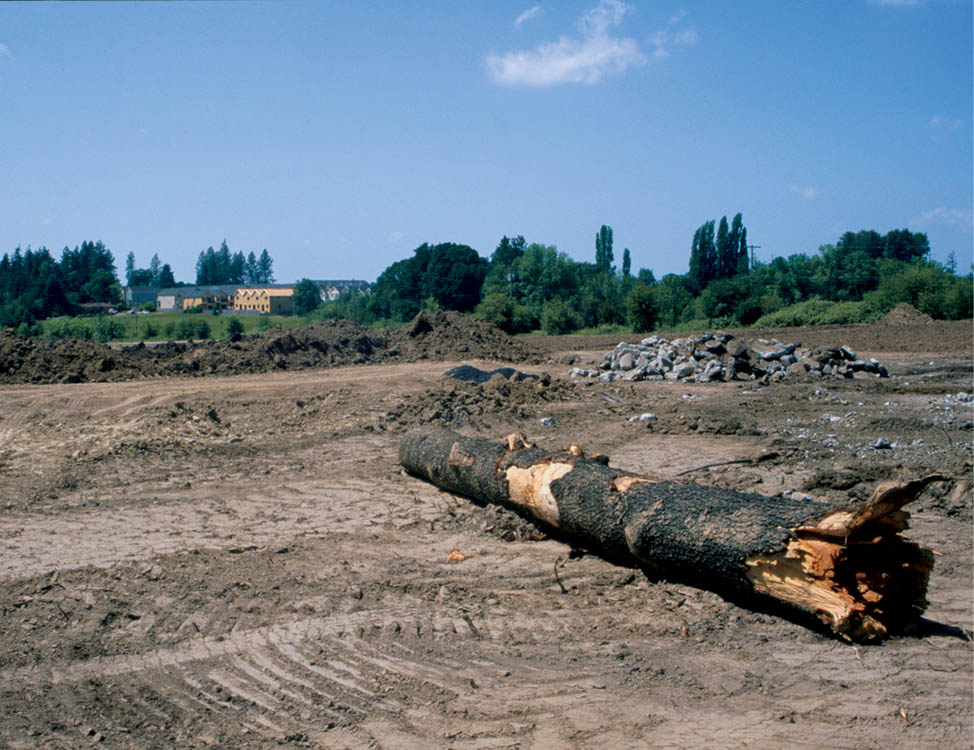
Urban development leads to dramatic and rapid changes in the landscape.
Historically, with prairies stretching to the horizon, there were sufficient areas of habitat in various stages of succession to support habitat-specific pollinators. Now that many of these areas exist only as fragments in otherwise intensively managed landscapes, the habitat needs of pollinators must be considered to ensure healthy populations.
Land-management and recreational practices also contribute to habitat degradation. Grazing, mowing, and fire, unless carefully managed, can damage pollinator populations, as can herbicides. These practices kill not just the target weed species but also plants that provide forage for pollinators. Additionally, the use of off-road vehicles often leads to severe habitat damage at popular recreation sites, particularly in sandy or dune areas.
Even light pollution causes problems for pollinators, by degrading habitat. For example, lights along streets and highways are believed to be partly responsible for losses of nocturnal insects, particularly large moths.
Scientists still do not understand exactly why moths are attracted to lights. One theory is that the insects navigate by maintaining a constant angular relationship to bright celestial lights, such as the moon or stars. The vast distance of these objects means that their orientation to a flying moth changes very little, and thus allows moths to fly in a straight path. A flying moth’s orientation to a street light or light bulb changes rapidly, causing the moth to become disoriented and to circle the light.
Another theory is that moths confuse artificial lights for the morning sun. In preparation for daylight, they fly straight up, toward the sun, and then look downward for a suitably camouflaged location to land and hide for the day from predators. Because in the darkness they can’t find a suitable hiding place, they fly directly into the light again and again.
Whatever the reason, artificial lights pose a real and direct threat to moths. They may also be detrimental to other beautiful and fascinating animals such as fireflies and birds that navigate by starlight, including the indigo bunting (Passerina cyanea). The best way to protect nocturnal wildlife from light pollution is simply to shut off outdoor lights wherever possible. A compromise is to use colored lights, especially red ones, which are less noticeable to most insects and less visible over long distances.
The introduction of exotic organisms, whether intentional or not, has affected native insects both indirectly and directly. Invasive nonnative plant species destroy habitat by crowding out the native plants that have evolved with native pollinators, replacing them with plants that offer inferior foraging and egg-laying opportunities.
Some nonnative plants may preferentially support invasive bee species. For example, yellow star-thistle (Centaurea solstitialis) in the west is a preferred pollen and nectar source for a nonnative leafcutter bee (Megachile apicalis). Research demonstrates that this bee produces more female offspring during the bloom period of yellow star-thistle. M. apicalis is highly competitive for nest sites, and it may exclude native leafcutters from nesting in areas where sites are in short supply.
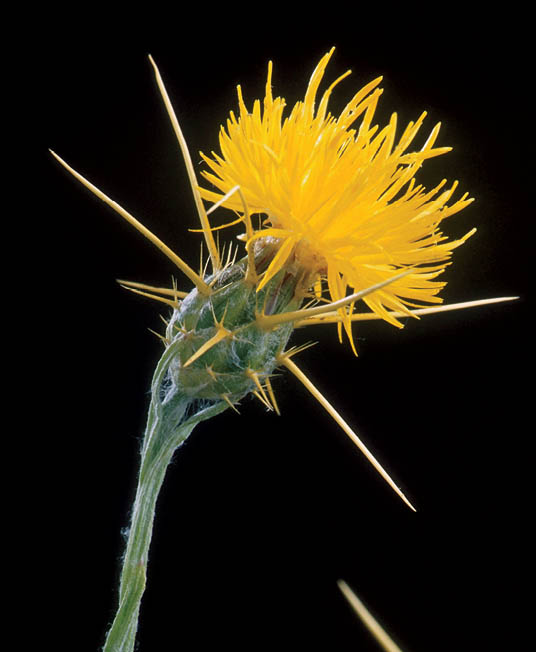
Yellow star-thistle (Centaurea solstitialis) is listed as a noxious weed in many of the western states.
Intentional introductions of nonnative insects also may directly harm native ones. Over the past century, nonnative insects have been released in order to control — as predators, parasites, or herbivores — pest insects and invasive plants. Often touted as a safe alternative to chemicals, this biological control is now frequently used. However, increasing evidence suggests that these releases can cause significant problems for native species.
For example, a parasitoid fly, Compsilura concinnata, was released repeatedly in North America from 1906 to 1986 as a biological control against several pests, including the introduced gypsy moth. Now the fly is implicated in the declines of four species of giant silk moths (family Saturniidae) in New England. Studies in Illinois have demonstrated that ladybird beetles (family Coccinellidae), introduced from Europe and Asia to control aphids on crops, also feed upon early instars of monarch butterflies and native lady beetles. Similarly, a recent study in Hawaii revealed that 83 percent of parasitoids found inside native moths were species that had intentionally or accidentally been introduced.
Indirectly, insects released for the purpose of controlling invasive plants can affect native pollinators by reducing food availability. For example, two European weevil species released in North America to control nonnative thistles now feed upon native thistles, reducing an important nectar source.
Effects of pathogens and parasites on honey bees are well documented, but less is known about their impact on native pollinators. The most studied group of native bees is bumble bees. In 2007, the National Research Council stated that a major cause of decline in several native bumble bees appears to be nonnative fungal and protozoan parasites inadvertently introduced by commercial bumble bee producers.
There is evidence that a fungal disease is the most likely cause in the decline of three widespread species of bumble bee: the western bumble bee (Bombus occidentalis), rusty-patched bumble bee (B. affinis), and yellow-banded bumble bee (B. terricola). All were once very common and important pollinators of crops and wildflowers over their ranges. A fourth species, Franklin’s bumble bee (B. franklini), which was much less widespread, may have gone extinct.
This disease and others were probably introduced in the early 1990s when colonies of North American bumble bees were taken to Europe for rearing, then reimported to the United States for managed pollination. These pathogens likely spread to wild bumble bees in the late 1990s as managed bumble bees were transported throughout the United States for pollination of tomatoes and other crops. Commercially reared bees frequently harbor pathogens, and their escape from greenhouses has been shown to infect local wild populations.
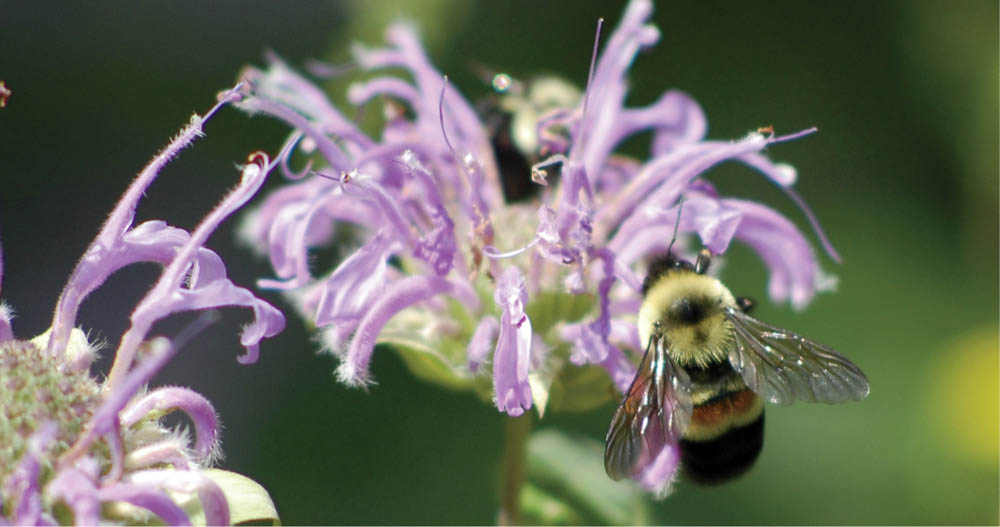
The rusty-patched bumble bee (Bombus affinis) is disappearing.
Although overcollecting has not been shown to harm healthy populations of insects, it may be an important threat to species with very small populations. The Endangered Species Act expressly forbids the collection of endangered or threatened species. Most insect conservationists believe that collecting from small populations should be done only for carefully designed scientific studies.
Scientists are beginning to understand some of the potential negative impacts of climate change, or more accurately climate destabilization. Climate destabilization won’t lead to uniform change across the landscape. Some places will be hotter and drier while others may be wetter, and in some places the weather may simply be more variable or extreme. It may affect plant communities and cause seasonal or geographic shifts that put pollinators out of sync with their food sources. Data show that some butterflies are shifting their ranges in response to the changing climate.
Climate destabilization is also endangering insects with specific, narrow habitat requirements. A changing climate is especially detrimental to species that can’t move to new, suitable habitat, such as the Uncompahgre fritillary (Boloria improba acrocnema), which is restricted to high mountain slopes in southern Colorado.
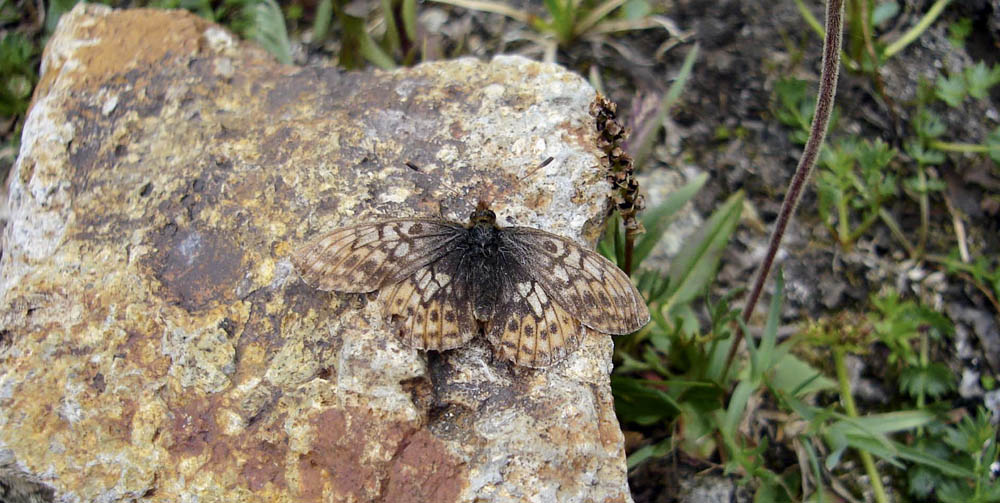
The Uncompahgre fritillary (Boloria improba acrocnema) lives in high-altitude meadows in the Rocky Mountains. Global warming means its habitat may rise too far up the mountaintops.
In the early 1970s, the blueberry farmers of New Brunswick, Canada, experienced a sudden decline in harvests because of the disappearance of the wild bumble bees, mason bees, and mining bees that pollinated their crops. The lack of bees, they learned later, was caused by the aerial spraying of the insecticide fenitrothion onto adjacent woodlands to kill spruce budworm. After the spraying was stopped, it took three years for bee populations to rebound and for fruit harvests to recover to their pre-spraying levels.
In the southwestern United States, beekeepers reported large kills of their honey bees after insecticides were applied to Bermuda grass grown for seed. The bees were apparently foraging for pollen on the grass flowers because there weren’t enough other blooming plants in these areas.
In 1973, in Washington state, the diazinon applied to control aphids on alfalfa also decimated foraging alkali bees, which are an important pollinator of alfalfa. The die-off of female bees led to a 95 percent drop in the number of underground bee larvae in three nearby nesting sites studied by one investigator.
These incidents are just three well-documented poisonings out of the many thousands that have occurred. The documentation of the New Brunswick bee kill is unusual in that it relates to wild bees. Far more often, the impacts of pesticides on managed pollinators are documented while the extent of the killing of wild bees goes unnoted.
Virtually all of the pollinator research on the effect of pesticides focuses on honey bees because of their importance to agriculture. However, the use of managed populations of solitary bees — in particular, alfalfa leafcutter bees (Megachile rotundata) and alkali bees (Nomia melanderi) for alfalfa — has provided opportunities and incentive to extend studies to native bees.
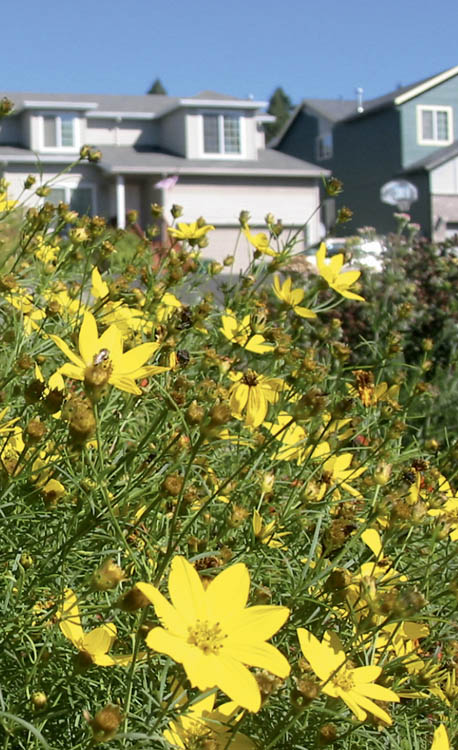
Native garden plants are usually adapted to local pests and typically need no insecticides to stay blooming and beautiful.
Pesticides are not just a problem on agricultural lands. Studies conducted by the U.S. Geological Survey and some municipalities have detected higher concentrations of pesticides in urban streams than in streams in agricultural areas. A study in the Puget Sound Basin of Washington found that more pounds of pesticides were applied per acre in urban neighborhoods than on farmland.
This should not be surprising. On farms, pesticides can be sprayed only by trained and licensed applicators, and the growers want to save money by using as little pesticide as they can. In addition, there are laws regulating pesticide use on agricultural lands. Homeowners, on the other hand, have access to a wide and abundant array of pesticides, no regulations on their use or licensing requirements, and almost no opportunities for education about the potential impacts of their spraying.
One thing is clear: Pesticides have a disastrous effect on pollinators. Millions of pounds of pesticides are applied to farms, fields, lawns, flower beds, and roadsides every year. Insecticides kill pollinators directly, while herbicides reduce the diversity and abundance of the flowering plants that supply them with pollen and nectar. Many pesticides degrade slowly, lingering as a toxic hazard to pollinators and other wildlife.
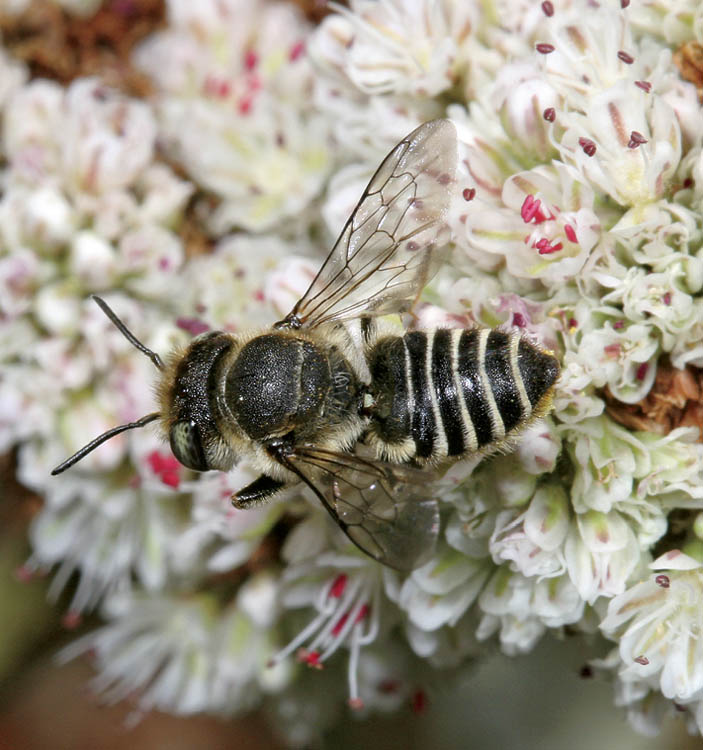
Pesticides directly harm foraging bees and can be carried back to the nest in toxin-tainted nectar and pollen.
Foraging bees are poisoned by pesticides when they absorb the fast-acting toxins through the integument (the outer “skin” that forms the exoskeleton), drink toxin-tainted nectar, or eat pesticide-covered pollen or micro-encapsulated poisons. If they are foraging while pesticides are being applied, the spray or dust covers them, killing significant numbers of bees in the field. If they are foraging on recently sprayed fields, they absorb toxins from the residues on plants, which kill them more slowly. Even dormant ground-nesting bees and their larvae are not necessarily safe, as they succumb to soil fumigants applied to kill root pathogens in farm fields.
Smaller bees (the majority of North America’s native bees) are more sensitive than honey bees. With a larger surface area relative to their body volume, they absorb doses that are relatively higher. They are killed by lower concentrations of poisons, and thus insecticide residues on plants remain at toxic levels longer for smaller bees. After a significant kill, beekeepers may find thousands of dead honey bees in and around each hive. One can only imagine the thousands of dead native bees that at the same time are scattered around the landscape out of sight.
Even less-than-lethal doses of pesticides can cause problems. Bees that are exposed outside the nest may have trouble navigating their way back after foraging, or they may be unable to fly at all. Other symptoms include aggressive or agitated behavior, jerky or wobbly movements, or paralysis, all of which make foraging and nest building difficult. Sub-lethal doses can result from direct contact with pesticides or from toxins brought into the nest with nectar and pollen. They may impair egg laying in the nest or harm the developing larvae, and impact the next generation of bees.
To further complicate these threats, a new class of systemic insecticides has been developed in recent years. These products, which mimic the toxins found in nicotine, are applied as seed treatments, foliar sprays, and root treatments. The chemicals are then absorbed and transported by the vascular system throughout the plant. Some research suggests that these chemicals may be sequestered in flower nectar or pollen, and that pollinators may be poisoned as a result. The threat is so significant that European countries have recently restricted the use of these chemicals after complaints by beekeepers. Butterfly caterpillars feeding on the leaves of host plants treated with these systemic products are also at risk. Scientists are even researching the threat these insecticides pose to leafcutter bees that harvest leaf pieces to line their nests.
Because of their low toxicity to mammals, these chemicals have been widely embraced by various agricultural and landscape industries. Increasingly, these chemicals are being used by the nursery trade to treat shade trees and bedding plants, expanding their reach into new areas of the environment.
Given the harm that pesticides inflict both directly and indirectly, as well as the weaknesses of the guidelines for protecting native pollinators, they should not be used unless there is no alternative. Specific alternatives to pesticides and guidelines to reduce their toxicity to pollinators are outlined in Alternatives to Pesticides.
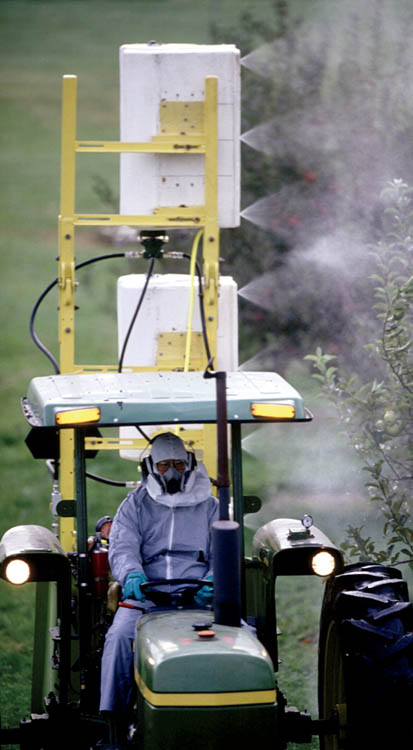
Given the harm that pesticides can cause, they should not be used unless there is no alternative.
Genetically modified (GM) crops are plants that have had their DNA altered to produce specific traits. In some cases, these modifications of a plant’s genes are performed by combining them with those of other organisms. Two types of GM crops are widespread: those that are insect-resistant and those that are herbicide-resistant.
Insect-resistant GM crops may reduce the need for insecticides because the plants have been altered to produce their own chemical defenses. Currently most insect-resistant GM crops have been transformed with genes from Bacillus thurigiensis (Bt). Bt is a naturally occurring soil bacterium that has been used as an organic insecticide for decades. Bt kills certain insects (usually caterpillars) by producing a toxic protein that ruptures the gut lining of those susceptible insect species that consume it. The ability to produce that protein has been engineered into insect-resistant GM crops, most of which target moth caterpillars.
Some early experiments of crops that were genetically modified with Bt showed that some butterfly larvae were harmed when they consume leaves of their host plants dusted with the pollen of GM crops. Recent studies suggest this risk is negligible. So far, there is also no evidence that Bt pollen adversely impacts bees. Bt is nontoxic to people, very targeted, and in non-GM form, approved for organic agriculture. Nevertheless, the use of Bt crops should be approached with caution.
Finally, despite the few inpacts to native bees and butterflies from Bt crops there are other problems associated with growing them. Some pest insects are becoming resistant to Bt. This is unfortunate because Bt is a very nontoxic control method for some insects, and without the ability to use Bt sprays, farmers may have to revert to more toxic substitutes. Bt corn has also been shown to harm some soil invertebrates and new research shows that toxins leaching from corn waste in streams can harm some aquatic insects.

Most corn grown in North America has been genetically modified.
Herbicide-resistant crops, the second type of genetically modified plants, are altered so that they are immune to the lethal effects of certain broad-spectrum herbicides. Because of this herbicide immunity, farmers are able to spray an entire field with herbicide, killing all weeds but leaving the crop unharmed. Crops modified for herbicide resistance account for 72 percent of global GM crop acreage.
There is evidence that pollinators may be threatened by the extensive herbicide use associated with herbicide-resistant crops. In these systems, there are almost no flowering weeds within and adjacent to crop fields. Research in Canada has shown that this near total lack of weeds reduces the number and abundance of native bees living around these fields.
RESEARCHERS HAVE DEMONSTRATED that there are fewer host plants and flowers for monarch butterflies due to the widespread use of herbicide-resistant crops. Field edges in the lower Midwest may be critical to sustain monarchs on their return north in the spring, when they need nectar sources to fuel their flight and native milkweed on which to lay their eggs.
These needs can be met with stepping-stone habitat patches, which may be nothing more than the “weeds” growing in a field margin or alongside a road. A tolerant farmer or road maintenance agency that leaves these areas to grow rather than spraying them may help provide the feeding and egg-laying resources these migrating pollinators need.
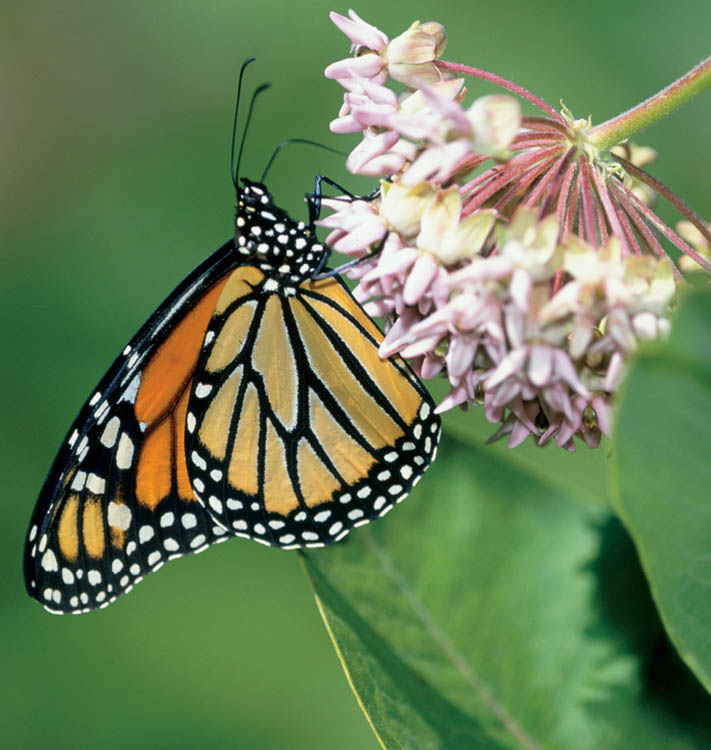
Monarch butterfly (Danaus plexippus) nectaring on milkweed.